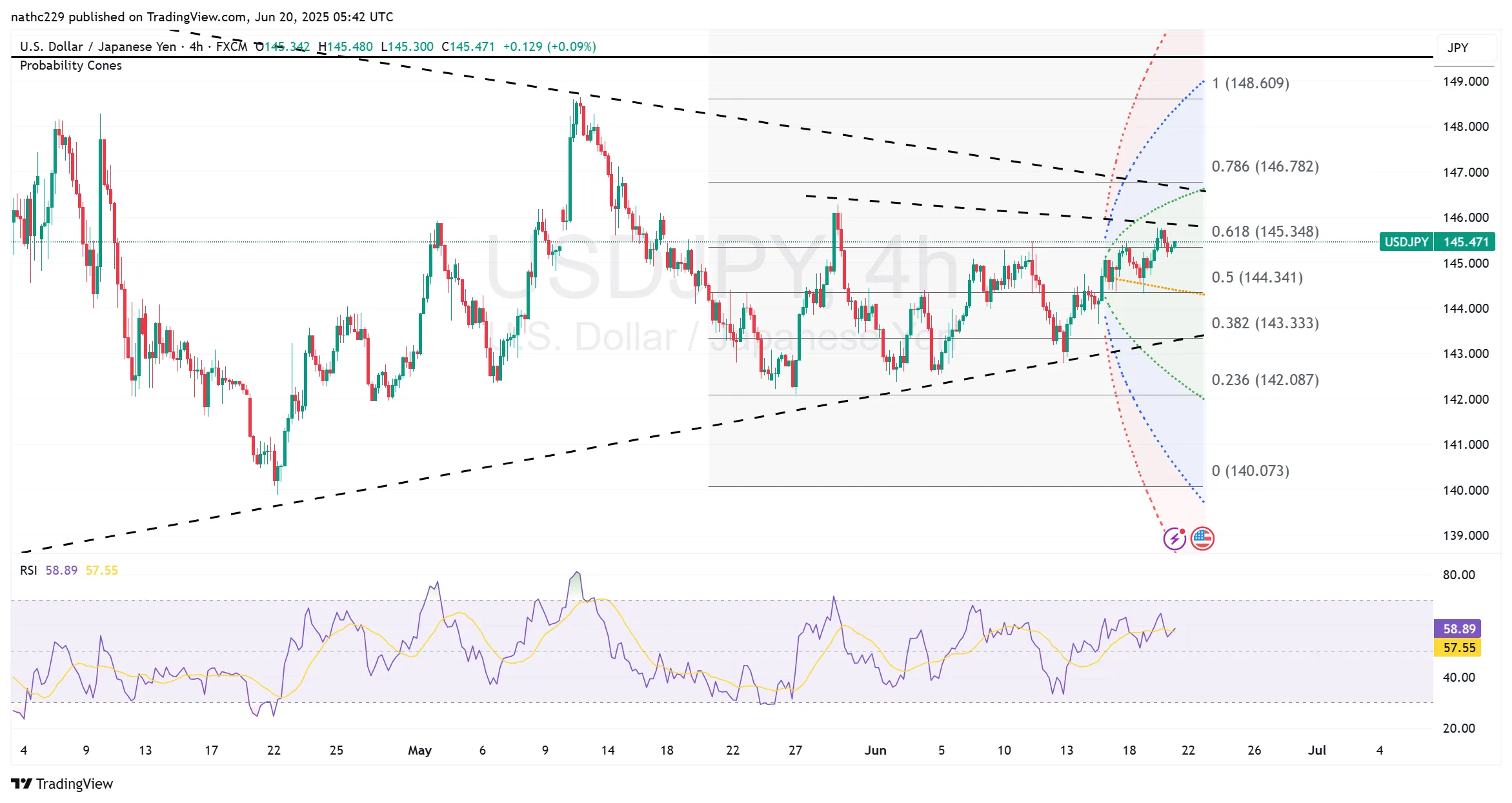
USD/JPY Consolidates Within Ichimoku Cloud as Market Eyes Key Technical Levels and Geopolitical Risks
USD/JPY Consolidates Within Ichimoku Cloud as Market Eyes Key Technical Levels and Geopolitical Risks
Overview
USD/JPY retreated into its Ichimoku cloud during Asian trading, marking a consolidation phase amid thin liquidity. The currency pair is oscillating between key technical levels, shaped by mixed market dynamics including geopolitical tensions, central bank policies, and substantial option expiries.
Technical Analysis
USD/JPY traded within a narrow range of 145.13–145.55 during the Asian session on EBS, signaling cautious sentiment. The daily Ichimoku cloud currently spans from 144.88 to 145.55, characterized by its thin structure and sideways movement, indicative of market indecision and potential breakout scenarios in either direction.
Previously, USD/JPY briefly moved above the cloud to 145.77, although this upward momentum was limited by holiday-induced low liquidity. Immediate support levels lie at the hourly ascending Ichimoku cloud, approximately between 144.88 and 144.89. Further downside protection is provided by rising moving averages, with the 100-hour MA at 144.92 and the 200-hour MA at 144.61.
Critical resistance is defined by the recent high of 145.77, with additional layers at significant psychological levels where large option expiries are noted at 145.00 and even larger ones at 146.00. These option barriers could act both as magnetic points and containment levels for the currency pair, potentially restricting extensive volatility in the short term.
Momentum oscillators reflect a neutral to slightly bearish bias within the current consolidation, suggesting limited directional conviction until a breakout from the defined Ichimoku cloud occurs.
Geopolitical and Market Factors
The ongoing geopolitical tensions in the Middle East remain a significant supporting factor for the U.S. dollar, maintaining the USD’s relatively firm stance against the yen. Persistent uncertainties involving regional conflicts tend to bolster the dollar as a safe-haven currency, reducing yen attractiveness unless global risk sentiment deteriorates sharply.
Market flows were relatively subdued at the Gotobi Tokyo fix ahead of the weekend, with minimal exporter and importer transactions recorded. Such reduced activity typically indicates cautious investor positioning amid ongoing geopolitical risks and upcoming economic data releases.
Central Bank Dynamics
Recent central bank decisions have broadly matched market expectations, influencing currency cross movements. The Bank of Japan’s commitment to maintaining an accommodative policy stance contrasts slightly with other global central banks that have signaled varying degrees of tightening or pauses in rate hikes.
EUR/JPY remained stable within a narrow trading band of 167.24–167.34, even amid dovish commentary from ECB’s Villeroy. This stability may reflect market participants’ focus on significant EUR 952 million option expiries today, anchoring the currency pair temporarily and limiting volatility.
GBP/JPY moved within the 195.54–196.03 range following the Bank of England’s decision to maintain rates, aligning with market expectations and reflecting stable cross-market sentiment.
Similarly, AUD/JPY has maintained a steady trading range between 93.97 and 94.34, held within broader support and resistance boundaries defined by the 100-hour MA at 93.37 and the 200-hour MA at 96.06, reflecting cautious risk sentiment.
Economic Indicators and Upcoming Data
Traders are closely monitoring upcoming Japanese economic releases, including April machinery orders and the May trade balance figures. These indicators will provide further insights into Japan’s economic health and potentially influence market sentiment toward the yen.
The potential impact of these data releases should not be underestimated, as unexpected results could trigger significant volatility, influencing USD/JPY’s near-term trajectory.
Risk Assessment
